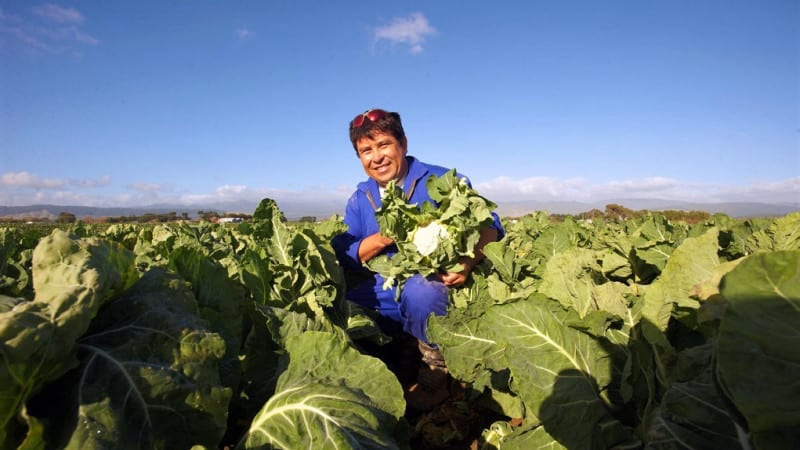
The rain this summer is without precedent; the increase in local fruit and vege prices will be similarly unparalleled.
Comment: I bought three imported Peruvian mangoes from our local Pak'nSave last night. After mopping up floodwaters in our house for a third time, I thought the family deserved a treat.
More to the point, they were $1.99 each – which seemed pretty affordable at a time when a New Zealand cauliflower is $7.99, a kilo of tasty cheese is $19.19, and eggs can't be found for love nor money.
Stats NZ's food price index, published this week, offers a glimmer of hope that rising prices at the supermarkets may be slowing just a little.
READ MORE: * Milking it: Retailers increase their margins on soaring food prices * Craftier cuts on the menu as food prices continue to outstrip restaurants * Food security at the heart of our cost of living crisis * Why one café is now charging $8.50 for a flat white
Yes, prices increased more last month than any time since July – but January is always pricy. The seasonally adjusted increase was just 0.3 percent over those 31 days, which is lower than any month last year.
But of course, this is grasping at straws. Food prices increased 10.3 percent over the past 12 months, down only slightly on the previous couple of months. The last time food prices were increasing this fast was in 2008.
And over the longer term, the heftiest rises come from New Zealand's own fruit, veges and dairy products.
Weighted average January food prices (Stats NZ)
So why do these prices continue to rise so fast? "Just look out the window," retorts Antony Heywood, the general manager of the Vegetable NZ growers association. "Jesus, if you can even find a cauliflower on the shelves, you're doing well."
Cauliflowers and other crops grown in Pukekohe have been devastated by the January 27 floods, and then hit again by Cyclone Gabrielle. "We haven a supply chain issue with all the major growing centres pretty much affected, either cut off like Hawke's Bay, or recovering from last week like Pukekohe."
Kiran Hari is a Vegetable NZ director, who over the years has grown cauliflower, broccoli and more recently leafy greens like spinach on the rolling hills of Pukekohe.
He says growers have been hard hit by the rain, the higher prices won't come close to covering the costs of the lost crops. Even on the hills, the floodwaters came in such torrents that they weren't able to drain away; they just pooled on the crops.
After the January 27 floods, the farms he works with replanted all their spinach crops – but thanks to Cyclone Gabrielle, they're likely to have to do it again.

So how does he feel about people like me turning their back on $8 cauliflowers, and buying imported fruit and veges instead?
Hari says: "I ask people to support local growers and our industry, because we are hurting at the moment. And we need people to buy what is available. There is still going to be – I'm not going to say 'bargains' – some affordable produce to be bought."
What Hari won't say (but I will say) is the frustration New Zealand growers feel at being blamed for rising prices, when they're pocketing less than ever.
This week, Foodstuffs managing director Chris Quin issued a media statement to says his co-op's New World, Pak'nSave and Four Square supermarkets kept their price rises to 9.3 percent – less than the food price index rise, and less than the increased prices the supermarkets paid their suppliers.
(A cynic might suggest they restrained average price rises by loss-leading on lager at $3.99 for a six-pack, a Pak'nSave promotion that's now being investigated by police, while basic 'bread and butter' prices soared. Alcohol isn't included in the food index, but it is in the consumers price index).
“Auckland’s wettest January on record has been really tough for local growers, with the long-term impact of the floods on crops like onions, lettuces and some root vegetables still to be felt." – Chris Quin, Foodstuffs
Surprisingly, cauliflowers are among the examples of affordable food that Quin cites. They're 24 percent cheaper than last January, he says. Broccoli, strawberries and lettuce have also been good value over the past month, he reckons.
“The impacts of January’s historic flooding across the upper North Island will likely add further challenges to the inflation fight at the checkout,” Quin says.
“The recent devastating floods have hit Auckland’s vegetable-growing regions hard at a critical time of the growing season and are making things challenging for our whole food ecosystem from paddock to plate.
“Auckland’s wettest January on record has been really tough for local growers, with the long-term impact of the floods on crops like onions, lettuces and some root vegetables still to be felt."
Quin says the supermarkets absorbed some of their suppliers' price rises – citing this month's Infometrics-Foodstuffs NZ Grocery Supplier Cost Index as evidence that suppliers hiked prices on products measured in the FPI basket by 9.4 percent last month.
That comparison is galling for New Zealand growers. They see supermarket chains and consumers complaining about $5 lettuces – yet willing to pay that every morning for a latté.
Or, dare I say it, imported mangoes ...







